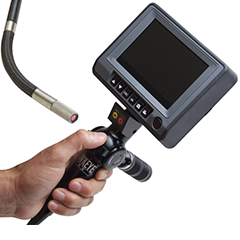标题页
-
Copyright© PaulRigby.Biz The template is complied in exact accordance with original ‘Bee Engagement, Self-Assessment Tool Kit’ copyrighted by Paul Rigby.Biz. Access and use of this template is restricted to users who were awarded of ‘Bee Engagement’ attendance certificates. Pls do not upload this template to public, or share it with ones who were not awarded of the ‘Bee Engagement’ attendance certificates. Assessment Report No.
-
Assessed by
-
Last update
Self-Assessment 1-Employee Engagement
-
1. Employees appear passionate about their work
-
2. Employees speak with pride about the organization
-
3. Employees demonstrate high levels of discretionary effort
-
4. Employees take the initiative to correct mistakes, even if it was outside the scope of their normal responsibilities
-
5. Employees regularly offer specific suggestions for improvement
-
[Interpreting your scores]
0- 5: You have a Significant problem with employee engagement in your organization your employees are largely underperforming to their potential. Scores this low indicate that the problem is not limited to a few employees and disengagement has actually become the cultural norm of your organization
6 - 10: Although there may be a moderate level of engagement across your work force, it is more likely that some employees are engaged while others are disengaged. Overall, you may be getting only50% of the discretionary effort that employees have to offer. Half of your staff are“sleep walking” that is they are doing just enough not the get fired. Scores in this range are consistent with, at best, maintaining the status quo
11-15: Congratulations, your score suggests a highly engaged workforce! The culture of your department organization is one that fosters employee involvement, loyalty, and dedication. Employees are fully in the game and using high levels of discretionary effort to reach the goals and objectives of your organization. Your engaged workforce gives you a competitive advantage
Self-Assessment 2-Recognition
-
1. I acknowledge and thank at least one person a day for his or her work on a specific task
-
2. In the past month, l have thanked every employee in my department for the work that he or she does either in person, over the phone ,or with a handwritten note
-
3. When l see an employee who is not my department do a good job, l make sure to let his or her manage know
-
4. When one of my employee does a great job, l request that my manager call to recognize that employee directly
-
5. I take time during each team meeting to publicly acknowledge individuals for their recent good work
-
[Interpreting your scores]
0- 5: Supervisors who score in this range are actively diminishing the human capital of their organization. Lt is not just that employees do not feel respected; they disrespected. As a result you and your organization are realizing only a fraction of the discretionary effort possible by your employees. Increasing your skills in the area of recognition should be an immediate priority
6 - 10: Your mediocre recognition scour will result in mediocre engagement and performance relative to the potential of your employees. Look for more regular opportunities to “catch employees performing well ” especially those employees who may be average performers and frequently overlooked. I t is among the average employees that you have the greatest opportunity to increase the productivity of your depart and organization
11-15: Sores in this rang suggest that you are regularly acknowledging your employees’ contributions and maximizing the human capital in your organization .Your employees feel respected and will repay you with high varied social reinforcement. Also, consider giving advice and guidance to other supervisors in your organization who could benefit increasing their skills in this area
Self-Assessment 3-Expectation Management
-
1. I set expectations and goals in collaboration with my employees
-
2. I make sure that goals include measurable outcomes and time frames
-
3. I explain the “why” behind the expectations
-
4. When employs fail to meet goals or expectations , l look first at my own behavior to see where l could have let my employee down
-
5. I hold employees accountable to meeting their performance goals
-
[lnterpreting your scores]
0-5: Your employees feel very disconnected from you and the goals that are set for them. They feel disrespected and are at risk of disengaging. Your supervisory style is significantly reducing the productivity and efficiency of your department. Begin improving your skills in this area immediately. In addition to these suggestions, consider identifying a mentor skilled in this area could offer advance and guidance toward your development
6-10: Employees are somewhat engaged and connected to their goals. Your modest skills in collaboratively setting clear expectations and holding employees accountable will result in acceptable but not superior or desired levels of performance. By following these suggestions you will significantly improve the chances of your employees’ success in meeting their goals as well as their level of engagement
11-15: Your supervisory style sets your employees up for success in meeting their goals and leads them to a sense of accomplishment and pride. Continue to engage employees and work toward them taking full responsibility for setting their own goals. Encourage team members to hold one another accountable for reaching their goals Consider serving as a mentor to supervisors in your organization who may have difficulty in this area
Self-Assessment 4-Trust
-
1. I trust my employees to do excellent work without me checking it
-
2. My employees and colleagues often confide in me
-
3. My employees trust me to do right by them
-
4. I trust team members to make business decisions on their own
-
5. Employees can count on me to “shoot straight” when delivering bad news
-
[Interpreting your scores]
0- 5: Your interpersonal style fosters a sense of distrust and disrespect that leads others to disengage from your employees and co-works do not feel trusted and likely don’t trust you. Of you are unable to increase the level of trust with your subordinates, your effectiveness as a supervisor will remain extremely effort as their level of engagement increase
6 - 10: You’re somewhat effective in your ability to foster trust among your employees .at the same time ,your employees do not feel fully trusted and do not feel trust you showing more trust to employees will bri recognized as highly respectful and lead your employees to demonstrate significantly more discretionary effort as their level of engagement increases
11-15: Congratulations, your trust of others and their trust in you indicate high levels of mutual respect Employees will display high levels of discretionary effort because you have created culture that show you believe in their abilities and judgement. Continue to identify and provide employees with even greater levels of responsibility and autonomy
Self-Assessment 5-Partnering
-
1. l give team members authority and responsibility for making most decisions
-
2. l openly share financial and big –picture information with employees
-
3. l actively share information and resources with other departments
-
4. l actively involve employees in hiring decisions
-
5. l regularly reach out to internal and external customers for feed-forward
-
[Interpreting your scores]
0- 5: You maintain a traditional management-employee hierarchy that does not show respect for your employees’ ideas or abilities. Employees are unlikely to feel engaged in their work or relationship with you. There is little collaboration within your department or with other departments. Your behaviours actively suppress a sense of partnership and greatly limit the potential of your people and team
6-10: Your behaviours support teamwork but not partnering. Employees will experience some level of respect and engagement. Collaboration may exist among some team members but is unlikely to occur across departments .There is an opportunity for you to show greater respect to employees and engage them more fully in partnership
11-15: Your leadership style demonstrates great respect for employees and fosters meaning partnerships. Your employees are likely to feel highly engaged and will more readily reach out and partner with both internal and external customers. Continue to look for opportunities to strengthen and expand your collaboration within your team members, other departments, and those outside your organization.
Self-Assessment 6-Entrust/Empowerment
-
1. I regularly as employees how can l help them be more successful
-
2. I delegate as much decision-making responsibility as possible to employees
-
3. I insist that employees receive continued training to expand their skills
-
4. I actively encourage employees to take educated risks
-
5. I ask employees for suggestions on eliminating or changing policies they find restrictive
-
[Interpreting your scores]
0-5: Your management approach is disrespectful, disempowering, and disengaging. You are actively limiting the potential of your employees and causing them significant frustration. Employees see you as holding them back and are likely to leave you and the organization unless you quickly and dramatically overhaul your management style
6-10: While you do little to empower employees, you do not actively disempower them. With the overall goal of maximizing employee engagement in your organization, you have a significant opportunity to provide opportunities. You need to create an environment that will cha1lenge and push your people limit them
11-15: Congratulations, your management style is one that maximises the human capital of your empowering by employees to grow, develop, and deliver their best. Your people feel trusted and empowered to make, decisions experiment, and learn from their mistakes. Such employees will feel unencumbered by policies and procedures that limit their autonomy and create needless red tape. Your approach leads to employeesfeeling respected, empowered, and engaged
Self-Assessment 7-Consideration
-
1. I spend time checking in with my employees every day
-
2. I reinforce team members when l see them acting considerately
-
3. I notice when employees are not themselves and let them know that l am concerned about them
-
4. When employees come in sick, l encourage them to go home and take care of themselves
-
5. I ask employees specific questions about their family members ,such as,” how is your son John doing in football ”
-
[Interpreting your scores]
0-5: Your employees view you as inconsiderate and uncaring. Your lack of consideration is adversely affecting your employees' experience of feeling respected, which in turn decreases their level of engagement and, subsequently, the success of your organization. Your ineffectiveness in the area of consideration requires immediate attention
6-10: While your moderate level of consideration is not actively causing employees to disengage, it is not helping them to engage either. Scores in this range may also suggest that you are showing favouritism to some employees. Make sure that you are demonstrating consideration to all employees-not just to those who are the most productive or with whom you have a close personal relationship. Identify which behaviours lowered your score and seek to improve in these areas
11-15: You are generally viewed as a thoughtful and considerate leader whose behaviours foster a stong sense of loyalty and commitment from your employees. Your ability to empathise with others will make them feel understood and respected. Consider working to develop other leaders in your organization who lack this skill
Self-Assessment 8-Supportive Feed-forward
-
1. l give specific performance feed-forward to employees on a daily basis
-
2. l always provide feed-forward in a supportive manner, even the most critical
-
3. l encourage team members to provide me with regular feed-forward on my performance and effectiveness
-
4. When l am concerned about an employee’s behavior, l provide coaching within 24hours of becoming aware of the problem
-
5. I follow up with employees soon after giving corrective feed-forward to either reinforce the positive change or provide continued coaching
-
[Interpreting your scores]
0-5: You are failing your employees and either need to immediately address this problem or go back to being a “player". Supervision is not for everyone. By not providing emp1oyees with regular feed-forward, you are not helping them to improve; in fact, the overall performance goes unchecked. Whether you realise it or not, your current lack of coaching, or as you may call it, “hands off” approach is seriously limiting the potential of your team and overall human capital of your organization
6-10: You are maintaining and may be slightly improving the overall skills and effectiveness of team members. However, your employees need more regular supportive feed-forward to really grown and develop .For an individuals to realise their potential, they must be coached and mentored on a daily basis. Upping your game will significantly improve the performance and engagement of your team members
11-15: Congratulations, you are an active and effective coach. You continuously seek to improve the skills of your team members and, in the process, demonstrate your respect for them and the value that they bring to the team. If you have not already begun doing so, start emphasising the importance of both self-assessment and forward. Consider coaching other leaders in your organization who may be struggling in this area









